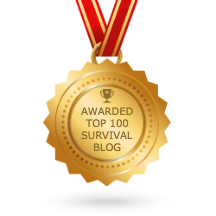No one knows when disaster might strike or where they will be
when an emergency situation happens. It could occur while you're at
home, traveling in your car, at work, while on vacation, or while
exploring the great outdoors. It could be something that lasts a few
hours or a few days. To cope with any type of crisis situation,
emergency preparedness is essential.
There are several key
components of a comprehensive emergency preparedness plan. How well are
you prepared? Below is a checklist that addresses emergency
preparedness. See how prepared you are to face any type of catastrophe.
Give yourself a point for every "Yes" answer.
1. When you go
hiking, mountain climbing, boating, fishing, cross country skiing,
canoeing, or take part in any other outdoor activity, do you have a
survival kit in case you get lost, injured, or separated from the group?
2.
Do you have an emergency preparedness plan so that all family members
know where to go and how to get in touch in case a disaster occurs when
everyone's away from home, such as at work and at school?
3. Do you have an emergency preparedness disaster supplies kit for your home? For your office? For your car?
4.
Does your survival kit include the basics of a three-day supply per
person of food and water; a battery powered radio; a flashlight; a first
aid kit; an emergency blanket; matches in a waterproof container or a
fire starter kit; hygiene and sanitation items; a rescue signal, such as
a whistle; extra clothing; a manually operated can opener; extra
batteries; copies of identification; cash and change; and other items
that you and your family require on a daily basis, such as
prescriptions, eye glasses and hearing aid batteries?
5. Do you
maintain your disaster supplies kit by changing food and water supplies
every six months; storing canned and packaged foods in a cool, dry
place; replacing expired items; and updating the contents each year or
as your family's needs change?
6. Are you aware of the risk level
in your community for possible hazards or emergency situations? These
can include floods, hurricanes, tornadoes, severe thunderstorms and
lighting, winter storms, earthquakes, extreme heat, volcanoes,
landslides, fires, tsunamis, hazardous material leaks, nuclear power
plant incidents, terrorism, explosions, chemical threats, biological
threats and nuclear blasts.
7. Does your emergency preparedness
plan include an evacuation route for you and your family in the event
you have to leave your home, work, or school?
8. Do you know how to shut off utility services to your home, such as natural gas, the main water valve and electricity?
9. Have you established an emergency preparedness plan for your pets?
10.
Are you prepared to shelter-in-place at home, work, school, or in
between, and to seal off a room from outside air in the event of
chemical or radiological contaminants?
While preparing for an
emergency or natural disaster can be overwhelming, taking emergency
preparedness steps will help you and your family better cope with a
stressful situation. Emergency preparedness also ensures that you and
your loved ones will all make it through the crisis situation just fine.
Survival-Gear.com has survival kits and gear suited to help you prepare for the unexpected. Their
emergency preparedness packs are stocked with high quality survival items you can count on when you need it.














